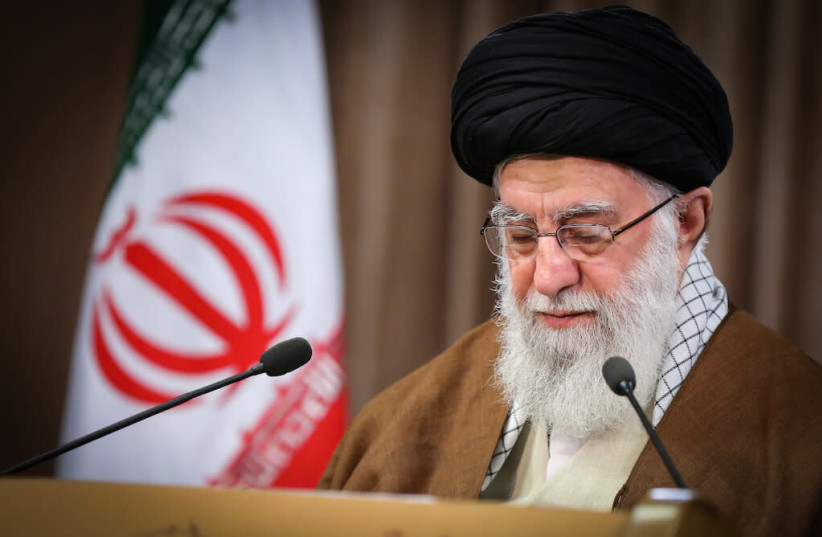For Iran this embarrassment is compounded by an increasing crescendo of articles that not only highlight the destruction at the site but also point fingers at who did it.
SETH J. FRANTZMAN

The evidence is piling up for Iran’s leadership: A mysterious explosion at a warehouse at its sensitive and advanced nuclear facility of Natanz has caused deep and lasting damage that has set back its nuclear work. For Iran, this embarrassment is compounded by an increasing crescendo of articles that not only highlight the destruction at the site but also point fingers at who did it. Al-Jarida media in Kuwait had first alleged it was a cyberattack; now The New York Times has said that Israel was responsible.
Iran had already begun to shift focus from it being an “accident,” as it first claimed the mysterious explosion was on July 2, to being a more serious incident.
Tehran had to weigh the consequences of misleading international atomic energy inspectors and officials. After all, if Iran said it as an accident and then said it was attacked, that might make it look incompetent. Having shot down a civilian airliner in January, that’s already how the regime looks.
The New York Times piece alleges that a powerful bomb was behind the attack. The explosion harmed an area that relates to advanced centrifuges. Iran has said over the past year that it is increasing the number of IR-6 centrifuges at Natanz. Last year there were reportedly some 60 IR-6 advanced centrifuges being used by Iran, and uranium hexaflouride gas was being fed into some of them. Iran’s Tasnim news showed off a truck containing a cylinder of the gas leaving the enrichment facility at Natanz last year. Now a key facility in the supply chain and development of this advanced work has been badly damaged or destroyed, reports indicate.
For now, Iran is concerned about the embarrassment of the Natanz incident. ISNA, Fars News, Tasnim and other Iranian media that are state-run or linked to the state are not pointing fingers or discussing the incident. Iran’s message was that the explosion was an accident and that it would investigate, determine if it was intentional and then weigh its response.
Neighboring countries are holding their breath. Kuwait’s media has stopped covering the incident; Gulf media is also waiting to see what may happen. Iran is in the middle of a series of political crises. Foreign Minister Javad Zarif was in parliament over the weekend where he was insulted and heckled. He has been called a “liar” by key media and officials.
Zarif always projects an air of happy arrogance abroad where he feels most comfortable and is often worshiped by Western diplomats. But at home Zarif can’t pull the wool over everyone’s eyes all the time, and he has been castigated. In addition, speaker of parliament Mohammed Bagher Qalibaf looks to play an increasing role in foreign policy. He has been speaking with Palestinian factions recently, urging hatred of Israel. Iran has also triggered the nuclear deal dispute mechanism – oddly just a day after the Natanz incident.
To understand Iran’s Natanz reaction, we must thus understand that there is internal political chaos bubbling under the surface in the Islamic Republic. There is economic uncertainty. There are a variety of other problems there, and the nuclear drive to add centrifuges and gas – and all of this – is just a piece of the puzzle.
Iran’s IRGC is itching for a fight. It has lost its key official, Quds Force head Qasem Soleimani in a January US airstrike. It’s new commander Esmail Ghaani is an expert on Afghanistan, but not on Israel and the Arab world. Yet he was in Syria in June to oversee Iran’s regional game plan. But Iran knows that its ally in Syria is undergoing an economic disaster from US sanctions, and its Hezbollah ally in Lebanon is also facing economic chaos in Beirut.
Iran’s only real victory is on the world stage where Russia and China want to help it end the arms embargo. Tehran would like that to happen so it can continue to funnel weapons to groups like the Houthis in Yemen. Even on that file, Iran has seen two weapons shipments intercepted by the US Navy in the last year.
Natanz is important, and the increasing spotlight put on the damage and accusations of who did it will rile up Iran’s IRGC as well as demands for a response. But Iran will have to choose carefully its next moves – in a region that is a powder keg and one where it is trying to open up diplomatic avenues.
Content retrieved from: https://www.jpost.com/middle-east/iran-news/natanz-nuclear-site-explosion-looking-worse-for-iran-amid-internal-crisis-634019.